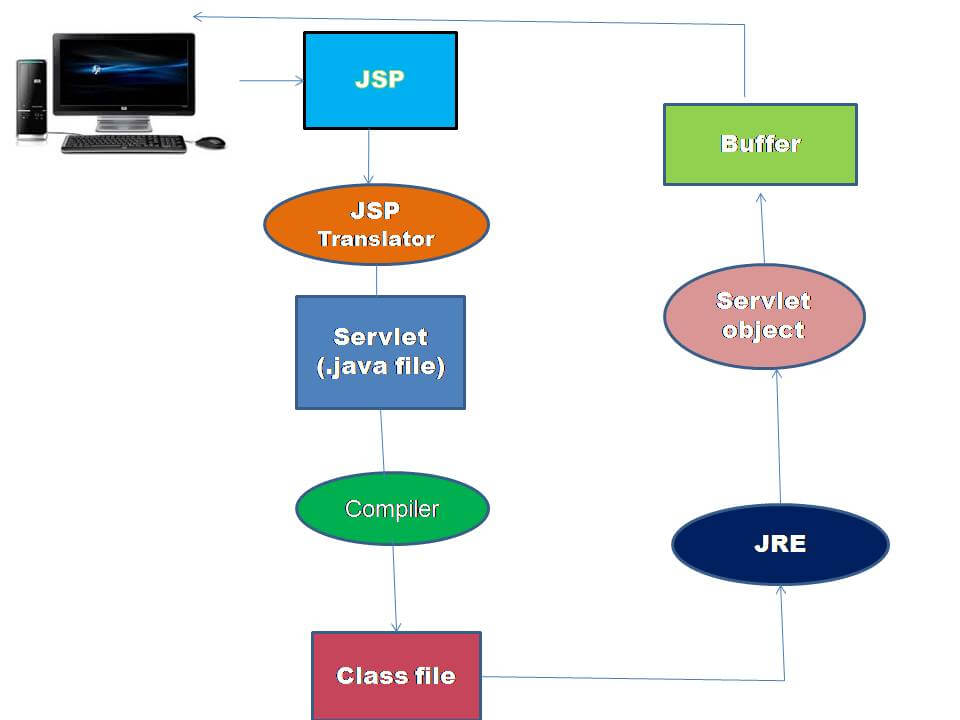
Introduction to JSP:
JSP innovation is utilized to make web application simply like Servlet innovation. It can be thought of as an expansion to servlet on the grounds that it gives more usefulness than servlet, for example, Expression dialect, JSTL .
A JSP page comprises of HTML labels and JSP labels. The JSP pages are less demanding to keep up than servlet in light of the fact that we can isolate planning and advancement. It gives some extra components, for example, Expression Language, Custom Tag is an introduction to JSP.
Advantage of JSP:
1) Extension to Servlet2) Easy to maintain3) Fast Development4) Less code than ServletLife cycle of a JSP Page:
- Translation of JSP Page
- Compilation of JSP Page
- Class loading
- Instantiation
- Initialization
- Request processing
Destroy As portrayed in the above outline, JSP page is converted into servlet by the assistance of JSP interpreter. The JSP interpreter is a piece of webserver that is mindful to make an interpretation of the JSP page into servlet. After that Servlet page is incorporated by the compiler and gets changed over into the class record. In addition, every one of the procedures that occurs in servlet is performed on JSP later like instatement, submitting reaction to the program and obliterate.
Life Cycle of JSP Page:

JSP API:
- servlet.jsp
- servlet.jsp.tagext
javax.servlet.jsp package:
- JspPage
- HttpJspPage
- JspWriter
- PageContext
- JspFactory
- JspEngineInfo
- JspException
- JspError
Jsp Page interface:
All Servlet classes should be implements in Servlet interfaces and extends in to servlets.Methods of JspPage interface:- public void jspInit()
- public void jspDestroy()
Http JSP Page interface:
It is one cycle method in JSP and it extends the JSP interface page.Method of HttpJspPage interface:- public void _jspService()